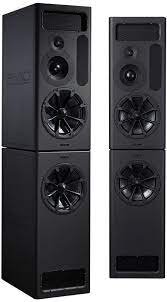It’s quite an opinionated article, which is perfectly fine by me. I’ve also read parts of his 500+ page book. I think he’s probably a bit of a genius and I have a lot of respect for him. That said, he appears to believe that 2-channel is fundamentally flawed. He may have a point. Everything Harmon does involves subwoofers and in his personal audio system he has 15 speakers, including two main speakers hung upside down on the wall. Harmons main products are automotive and home cinema, so a lot of his work seems to be aimed at solutions to those problems, getting big deep sound with multiple listeners in the room or well equalised sound in a very small space. These are very different from 2-channel problems.This is a great paper. Thank you for posting this link.
Potential readers - don’t limit your reading to the penultimate paragraph on p27. Read the whole thing.
The Harmon reference listening room is about 45 m² with stud wall covered in plasterboard. The average UK living room is 16.1 m² with brick walls.
I disagree with Toole and Olive on the idea of the “circle of confusion”, which starts with recordings being made with inaccurate speakers in inaccurate studios about which engineers are completely ignorant, reproduced by inaccurate speakers in inaccurate rooms. There is a lot of evidence against this, not least at the BBC, where research into studio acoustics and more accurate monitoring was instigated by studio engineers complaining about uneven sound quality. This arose because there were quite a lot of bad studios built during and soon after WW2.
There is a lot of research done in Europe and Scandinavia, mainly aimed at studio acoustics. The only report I could find by Shaun Olive that was not behind the paywall was so fundamentally flawed, it was laughable. He admitted it, for example he had trained listeners evaluating one at a time at the sweet spot, but untrained listeners were herded in to the same room six at a time, so four of them were significantly off axis. they were asked to listen to a full range speaker, a speaker with almost no bass below 80 Hz and an extremely directional and pretty rubbish hybrid planar speaker. So the result was totally predictable. The sampling was also statistically invalid. It read like a Harmon Infomercial.
I do find it a little bit concerning that a lot of the research that the US objectivists rely on seem to be heavily driven by commercial interests.







